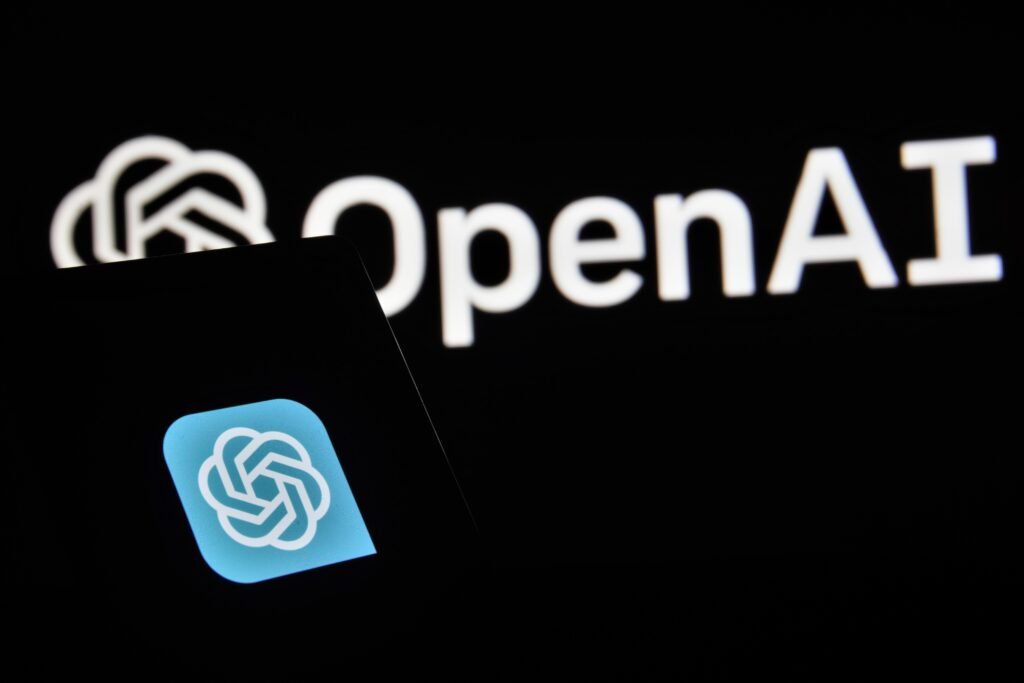Today, we’ll be taking a journey through time to explore the fascinating evolution of one of the most revolutionary technologies of our era: artificial intelligence. AI, as it is fondly known, encompasses a realm where algorithms, computing, and data training methods come together to grant machines the ability to mimic human knowledge and behaviors. It involves machines doing tasks and thinking at a level akin to humans. Within the realm of AI lies the concept of Generative AI, which utilizes big data training sets and neural networks to generate original content. However, it’s crucial to note that AI distinguishes itself from machine learning and deep learning, as both serve as subsets of AI. From the advent of AI in the 1950s to the present day, it has experienced numerous milestones across different decades, each shaping the technology’s evolvement. We’ll also explore the multitude of use cases where AI has found its footing, such as content generation, recommendation engines, cybersecurity, healthcare, and entertainment. So, fasten your seatbelt and prepare to immerse yourself in the captivating world of the ever-evolving artificial intelligence.
The Evolution of Artificial Intelligence
Artificial intelligence (AI) has come a long way since its inception, evolving and advancing at an unprecedented pace. From its early beginnings in the 1950s to the present day, AI has made significant strides in mimicking human knowledge and behaviors. In this comprehensive article, we will delve into the various aspects of AI and explore its history, capabilities, and real-world applications.
Overview of Artificial Intelligence
Defining Artificial Intelligence
At its core, artificial intelligence refers to the combination of algorithms, computing power, and data training methods that enable machines to emulate human intelligence and perform complex tasks. AI involves the ability of machines to think, reason, and make decisions in a way similar to humans.
AI Tasks and Abilities
Artificial intelligence encompasses a wide range of tasks and abilities. These include natural language processing, speech recognition, problem-solving, decision-making, image recognition, and pattern recognition. AI systems can analyze vast amounts of data, find patterns and insights, and provide intelligent solutions to complex problems.

Generative AI
Introduction to Generative AI
Generative AI is a fascinating aspect of artificial intelligence that focuses on the creation of original content outputs. It utilizes big data training sets and sophisticated neural networks to generate new and unique content, such as images, music, and text. Generative AI has found applications in various fields, such as art, music composition, and content creation.
How Generative AI Works
Generative AI operates by training neural networks on large datasets, exposing them to patterns, styles, and structures of existing content. The neural networks then learn to generate new content that closely resembles the training data. This process involves complex algorithms and models, which enable the AI system to create content that is innovative and imaginative.
Relationship between AI, ML, and Deep Learning
Differentiating AI, ML, and Deep Learning
While artificial intelligence, machine learning, and deep learning are often used interchangeably, they are distinct concepts that build upon one another. AI is the broader field that encompasses all aspects of creating intelligent machines. Machine learning is a subset of AI that focuses on training machines to learn and improve from past experiences. Deep learning, on the other hand, is a subset of machine learning that involves training deep neural networks with multiple layers to learn patterns and recognize complex features.
The Role of Machine Learning in AI
Machine learning plays a crucial role in the development of AI systems. By utilizing algorithms and statistical models, machine learning enables machines to learn and improve from experience without explicitly being programmed. This ability to adapt and improve over time is what makes AI systems intelligent and capable of performing complex tasks.
Understanding Deep Learning
Deep learning takes machine learning to the next level by utilizing deep neural networks with multiple layers. These neural networks can extract and learn intricate patterns and features from large datasets. Deep learning has been instrumental in breakthroughs across various fields, including computer vision, natural language processing, and speech recognition.

Types of AI
Narrow AI
Narrow AI, also known as weak AI, refers to AI systems that are designed to perform specific tasks or functions. These systems excel in a single domain and have a limited scope of expertise. Examples of narrow AI include voice assistants, language translators, and recommendation systems. While narrow AI can achieve remarkable results in its specialized domain, it lacks the ability to generalize or understand the broader context.
General AI
General AI, also known as strong AI, refers to AI systems that possess the ability to understand, learn, and perform any intellectual task that a human can do. Unlike narrow AI, general AI has a broader range of capabilities and can adapt to new situations and solve problems across multiple domains. Achieving true general AI remains a significant challenge and an active area of research in the field of artificial intelligence.
Superintelligence
Superintelligence goes beyond the capabilities of general AI and refers to AI systems that surpass human intelligence in virtually every aspect. Superintelligent AI would possess not only cognitive abilities but also self-awareness and consciousness. The concept of superintelligence raises ethical and existential questions, as it could potentially have a profound impact on human society.
Milestones in AI History
1950s: The Birth of AI
The history of artificial intelligence can be traced back to the 1950s when the field of AI was established as a distinct discipline. Researchers, including Alan Turing and John McCarthy, laid the foundation for AI by proposing theories and designing computational models that could simulate human intelligence.
1960s: Early AI Research
During the 1960s, AI research gained momentum, and significant progress was made in areas such as problem-solving, logical reasoning, and pattern recognition. The development of programs like DENDRAL, which could analyze chemical compounds, and ELIZA, a conversational agent, showcased the potential of AI applications.
1970s: Knowledge-Based Systems
In the 1970s, AI researchers focused on developing knowledge-based systems. These systems utilized explicit knowledge and rules to solve complex problems in specific domains. Expert systems, such as MYCIN for medical diagnosis and DART for troubleshooting, were prominent examples of this approach.
1980s: Expert Systems
The 1980s witnessed a surge in the development and implementation of expert systems. These systems incorporated domain-specific knowledge and heuristics to provide intelligent solutions in areas such as finance, engineering, and medicine. Expert systems showcased the practical applications of AI and paved the way for further advancements.
1990s: Emergence of Machine Learning
The 1990s marked a shift towards machine learning approaches in AI research. Machine learning algorithms, such as neural networks and decision trees, gained prominence for tasks such as speech recognition and image classification. The emergence of machine learning algorithms laid the foundation for the AI revolution that we witness today.
2000s: Big Data and Neural Networks
The 2000s saw significant advancements in AI, fueled by the availability of big data and advancements in computing power. Neural networks, with their ability to learn from large datasets, revolutionized fields such as computer vision, natural language processing, and data analysis. This era marked the beginning of AI breakthroughs in various industries and paved the way for the integration of AI into our daily lives.

AI Use Cases
Content Generation
Artificial intelligence has found extensive use in content generation. Generative AI models can create unique and original content, including text articles, artwork, and music compositions. These models have been employed by artists, writers, and musicians to explore new creative possibilities and push the boundaries of human imagination.
Recommendation Engines
Recommendation engines powered by AI have become an integral part of many online platforms. By analyzing user preferences, behavior, and historical data, AI algorithms can provide personalized recommendations for products, videos, music, and more. Recommendation engines enhance user experience and help businesses drive customer engagement and satisfaction.
Cybersecurity
AI plays a critical role in strengthening cybersecurity defenses. AI algorithms can analyze vast amounts of data to detect and prevent security breaches, identify patterns of abnormal behavior, and mitigate threats in real-time. AI-powered security systems have significantly improved the ability to protect sensitive data and infrastructure from cyberattacks.
Healthcare
In the field of healthcare, AI has the potential to revolutionize patient care and diagnosis. AI algorithms can analyze medical records, imaging scans, and genetic data to assist doctors in making accurate diagnoses, discovering patterns, predicting disease outcomes, and suggesting appropriate treatments. AI has the potential to enhance healthcare delivery, improve patient outcomes, and reduce healthcare costs.
Entertainment
AI has also made significant contributions to the entertainment industry. AI-powered technologies, such as virtual reality and augmented reality, have transformed the way we experience games, movies, and other forms of entertainment. Chatbots and conversational AI systems have enabled interactive storytelling experiences, while AI algorithms enhance graphics and visual effects in films and games.
In conclusion, the evolution of artificial intelligence has been rapid and transformative. From its early beginnings to its current applications, AI has proven to be a game-changer in various industries. As AI continues to advance, we can expect further innovations that will shape the world around us and redefine human-machine interactions. With ongoing research and development, the possibilities for AI are truly limitless, and we are only scratching the surface of its potential.





